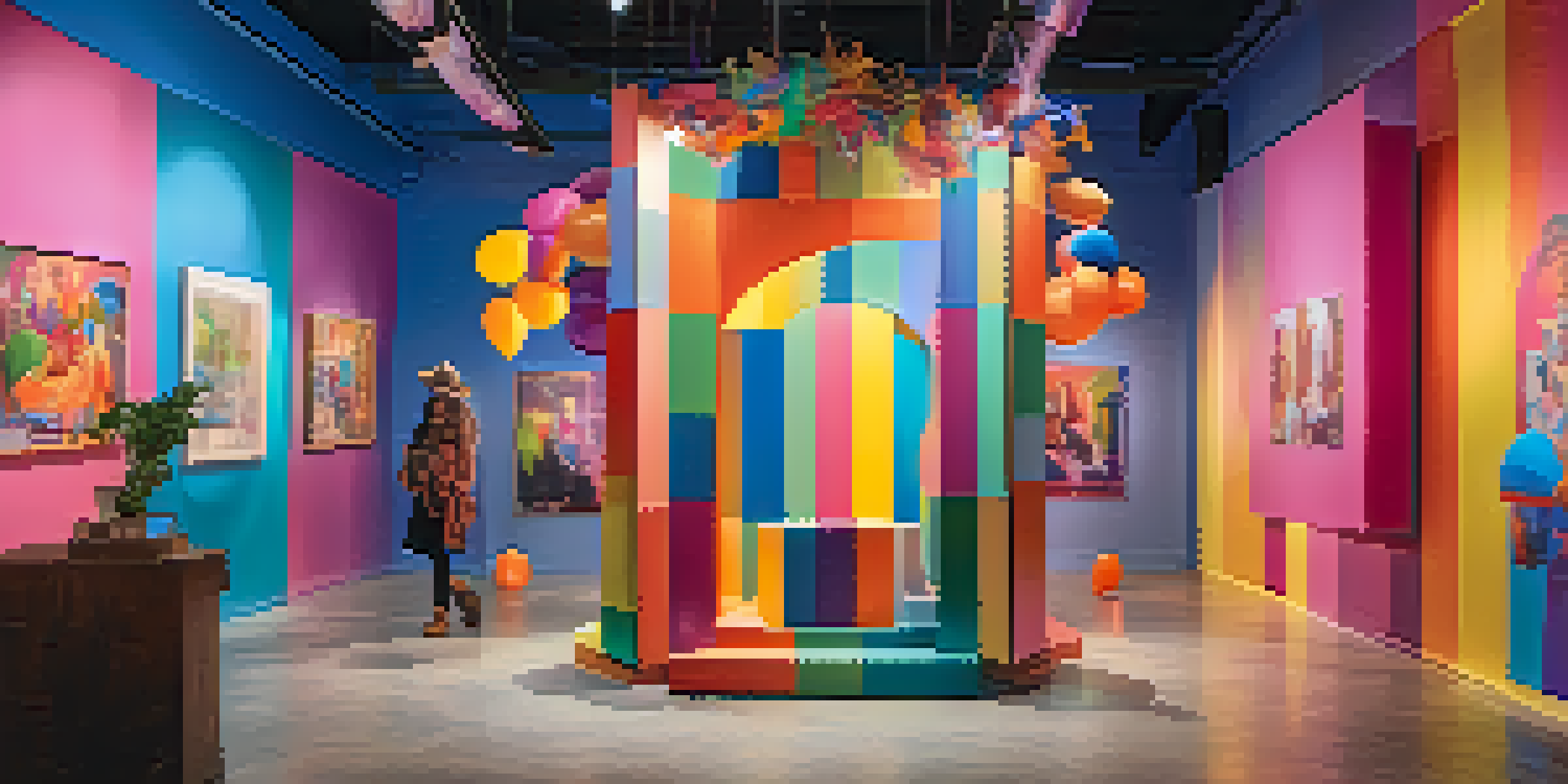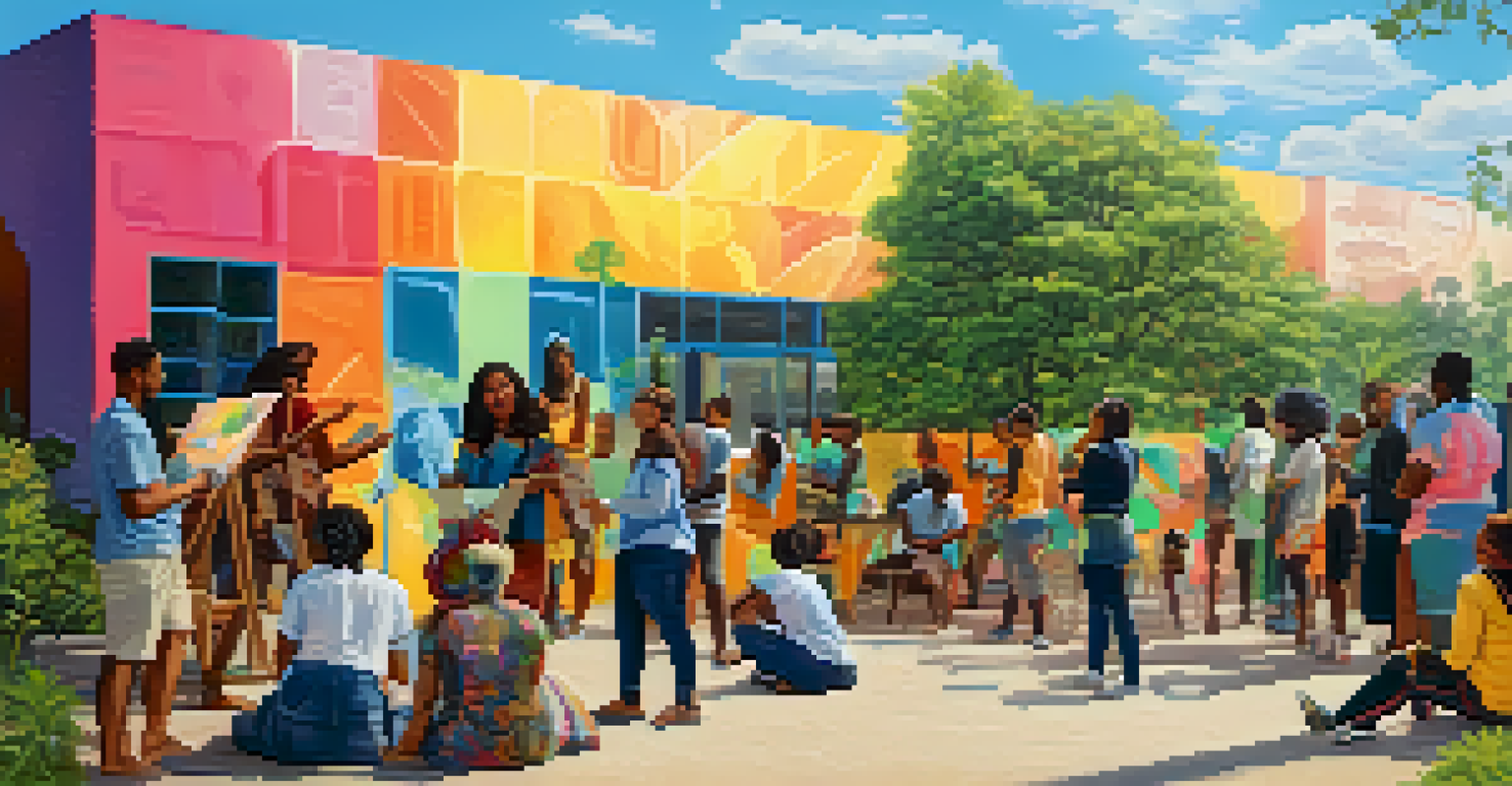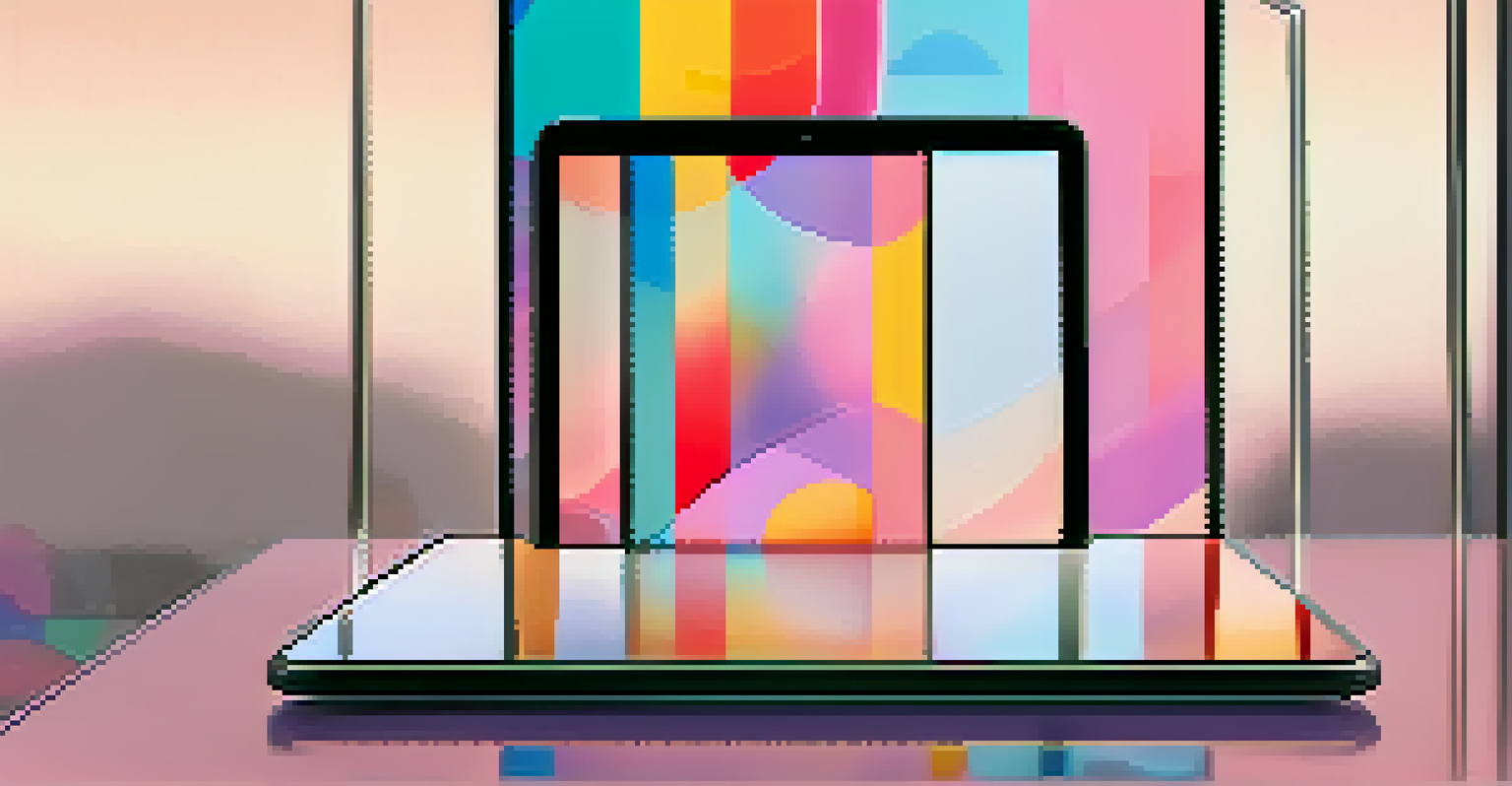Exploring Gender Representation in Global Art Styles

Understanding Gender Representation in Art
Gender representation in art reflects societal beliefs and values. It encompasses how different genders are portrayed, often revealing the dynamics of power, identity, and culture. From ancient sculptures to modern paintings, artists use gender to express themes of humanity and social issues, making it a critical lens for analysis.
Art is a reflection of society and its values, and how we portray gender in art is a conversation about who we are as a culture.
Art has historically depicted a narrow view of gender roles, often favoring masculine ideals in many cultures. This skewed representation can lead to stereotypes and limit the perception of gender diversity. As we explore various art styles globally, it becomes essential to recognize these biases and their implications on both art and society.
However, contemporary artists are challenging traditional representations by embracing gender fluidity and inclusivity. This shift not only enriches the art world but also reflects a growing awareness of gender issues. By broadening the conversation around gender, artists can inspire change and promote a more equitable view of humanity.
The Role of Culture in Gender Representation
Culture plays a pivotal role in shaping how gender is represented in art. Different cultures have unique beliefs and practices that influence their artistic expressions. For instance, in some Indigenous cultures, gender is seen as a spectrum, leading to diverse representations that challenge binary norms.

In contrast, Western art has often depicted gender through a more binary lens, particularly in the classical era. With depictions of women as muses or objects of beauty, the art often reinforced traditional gender roles. This cultural context is crucial for understanding how gender representation has evolved and the narratives that have emerged.
Art Reflects Gender and Society
Gender representation in art serves as a mirror to societal beliefs and values, revealing dynamics of power and identity.
As globalization brings cultures closer, we witness a cross-pollination of ideas that enrich gender representations in art. Artists from various backgrounds are now collaborating and drawing inspiration from each other's experiences. This fusion allows for a more nuanced exploration of gender that reflects the complexities of our global society.
Historical Perspectives on Gender in Art
Throughout history, the representation of gender in art has evolved significantly. In ancient times, art often depicted gender in relation to mythology and religion, with gods and goddesses embodying various traits associated with masculinity and femininity. These representations laid the groundwork for future artistic interpretations.
The role of an artist is to make the invisible visible, and in today's world, that means exploring the spectrum of gender identities.
The Renaissance brought about a shift, emphasizing realism and humanism, yet still largely favoring male figures. Women were often portrayed in passive roles, reinforcing existing societal structures. This historical context highlights the need to critically examine how past representations continue to influence contemporary views on gender.
In recent decades, art movements like feminism have sought to reclaim and redefine gender representation. Female artists have emerged with powerful narratives that challenge traditional portrayals, showcasing women's strength and complexity. This resurgence not only reshapes historical narratives but also inspires future generations to explore gender in new and meaningful ways.
Contemporary Art and Gender Fluidity
Contemporary art has embraced the concept of gender fluidity, allowing for a richer dialogue around identity. Artists today are pushing boundaries, exploring gender beyond the binary framework of male and female. This openness invites viewers to engage with their own perceptions of gender and identity.
By incorporating various mediums such as performance art, digital art, and installations, contemporary artists are breaking traditional molds. They challenge audiences to reflect on their understanding of gender roles and how these roles intersect with race, class, and sexuality. This intersectionality is crucial for a comprehensive understanding of gender representation.
Culture Shapes Gender Portrayals
Cultural contexts significantly influence how gender is depicted in art, leading to diverse representations that challenge binary norms.
Moreover, social media platforms have amplified diverse voices, enabling artists to share their work and perspectives globally. This democratization of art has empowered marginalized groups to express their unique experiences and challenge the status quo. Thus, contemporary art becomes a powerful tool for advocacy and social change.
Global Perspectives: Gender in Non-Western Art
When examining gender representation, it's vital to include non-Western art traditions. Cultures from Africa, Asia, and Latin America offer unique insights into gender roles and identities. For example, many African art forms celebrate dual gender representations, highlighting the balance and interdependence of masculine and feminine qualities.
In Asia, traditional art often reflects the roles of women in society, such as in Japanese ukiyo-e prints, where women are depicted in various aspects of life. These representations can reveal much about cultural values and the social status of women throughout history. Understanding these perspectives broadens our appreciation for the diversity of gender representation in art.
As globalization continues to influence art, non-Western perspectives are gaining more visibility in the global art scene. Artists are drawing from their rich cultural heritages while also engaging with contemporary issues. This blend of tradition and modernity creates a vibrant dialogue around gender that resonates with audiences worldwide.
The Influence of Technology on Gender Representation
Technology has dramatically transformed the art world, influencing how gender is represented. Digital art, virtual reality, and social media provide new platforms for artists to express their views on gender. These tools allow for innovative storytelling that can challenge traditional narratives and engage broader audiences.
For example, digital artists can create immersive experiences that explore gender identity in dynamic ways. By utilizing interactive elements, viewers can participate in the narrative, fostering a deeper understanding of gender complexities. This interactivity enhances the engagement, making discussions about gender more accessible and impactful.
Technology Redefines Gender Art
The rise of digital platforms and social media has transformed gender representation in art, allowing for innovative expressions and broader visibility.
Furthermore, social media serves as a powerful vehicle for artists to share their work and ideas. Artists who identify as non-binary or genderqueer are using these platforms to highlight their experiences and perspectives. This visibility not only validates their identities but also encourages conversations about gender representation in the larger art community.
Future Directions in Gender Representation in Art
Looking ahead, the future of gender representation in art is promising and filled with potential. As more artists challenge conventional norms, we can expect an increasingly diverse portrayal of gender. This evolution will likely inspire new conversations about identity, culture, and society.
Art institutions and galleries are also beginning to recognize the importance of inclusive representation. By showcasing works from underrepresented artists, they can help shift the narrative around gender in art. This commitment to diversity not only enriches the art world but also reflects the complexities of our society.

Ultimately, the ongoing dialogue about gender representation in art is crucial for social change. As artists continue to push boundaries and explore new narratives, they can inspire audiences to reflect on their beliefs and values. By engaging with these representations, we can foster a more inclusive understanding of gender in all its forms.